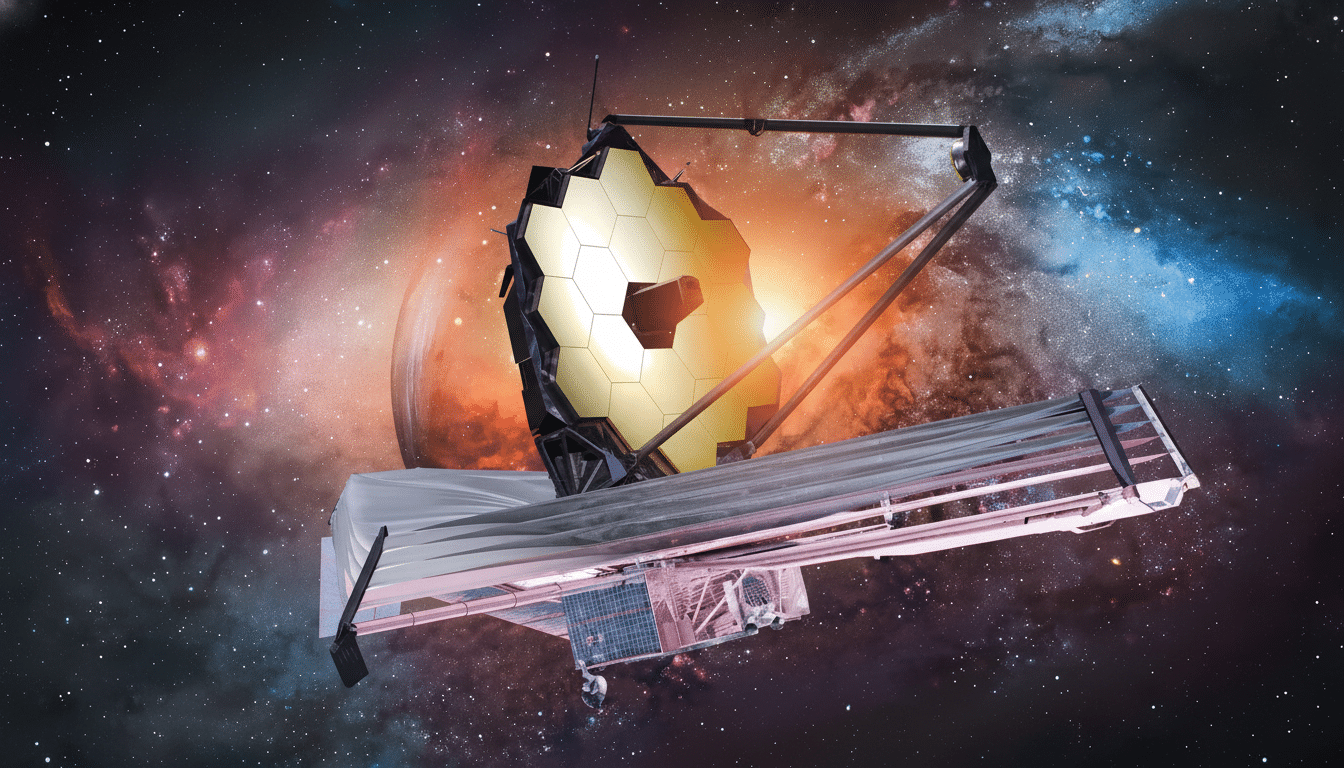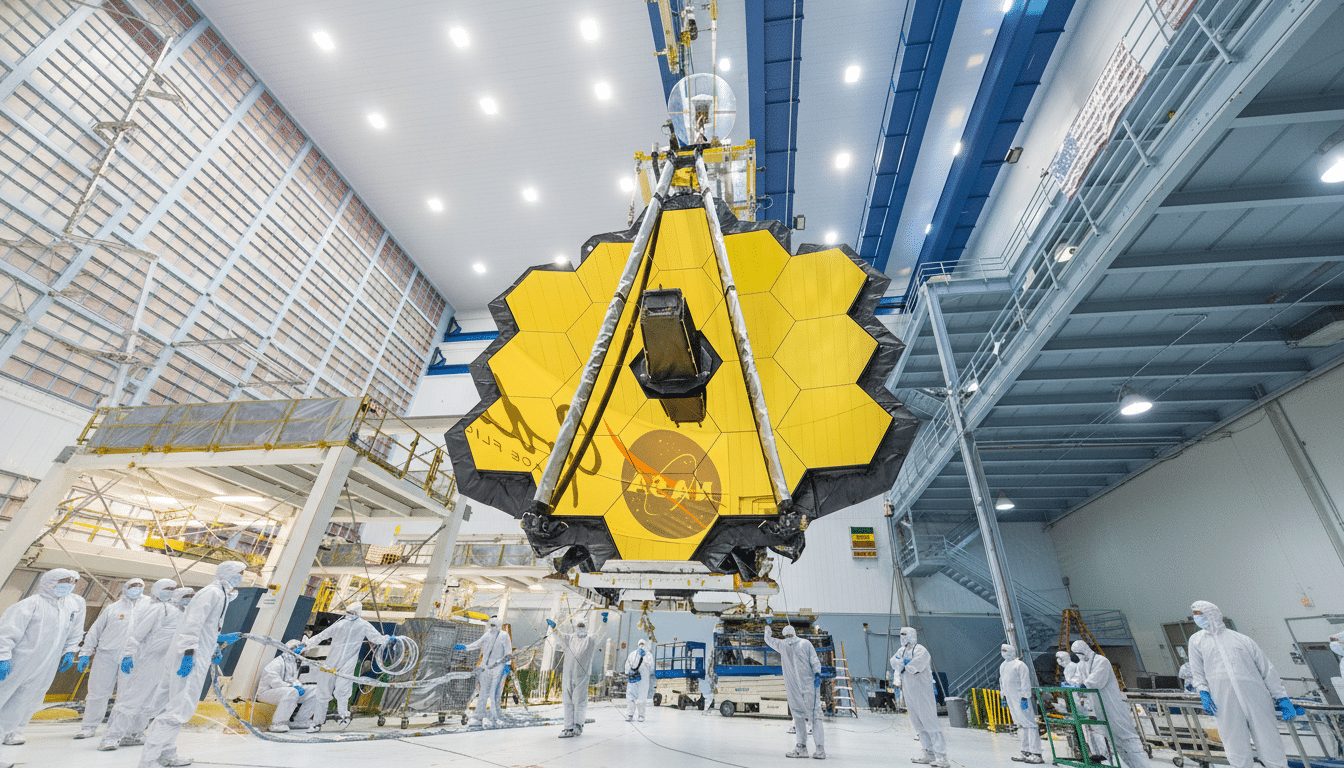The James Webb Space Telescope has provided a breakthrough in stellar forensics, capturing both a supernova’s progenitor star and the resulting aftermath in the same area of sky. For the first time, astronomers were able to line up a newly exploded star with what it had looked like before the blowup, all using Webb’s own archival images, and gain a clearer window into how massive stars die.
Webb Offers a Rare Before and After of a Supernova
The explosion, called SN 2025pht, rocked an adjacent spiral galaxy known as NGC 1637, roughly 40 million light-years from Earth. By lining up accurate coordinates, the researchers then zeroed in on a faint, red object right at the position of the blast and confirmed that it was a match by comparing images taken before and after the event with Webb’s predecessor telescope: the Hubble Space Telescope. The team reports the finding in The Astrophysical Journal Letters.

This detection stands out because Webb’s infrared sensitivity allowed it to catch the doomed star before it disappeared, a feat that ground-based telescopes and even Hubble often fail at when thick dust clouds block everything from view.
It is the most definitive progenitor identification to date from Webb, a joint NASA-European Space Agency-Canadian Space Agency mission operated by the Space Telescope Science Institute.
Dusty Shroud Hints at a Hidden Parent Star
Analysis of the star shows that it was a red supergiant, about 15 times the mass of the Sun – a standard setup for a Type II supernova. Despite shining with nearly 100,000 times the Sun’s luminosity — much more than even the most luminous stars in our own Milky Way galaxy — it appeared over 100 times fainter than expected, as a thick shroud of dust absorbed and reflected its light. What was hidden to the human eye, darkened by such shrouds, Webb’s infrared cameras could see through — and they barely overexposed that brightness after Paulson made necessary tweaks to prevent them from doing so.
Modeling of the star’s spectral energy distribution indicates that it has a peculiar dust chemistry. Unlike the usual oxygen-rich silicates which enshroud a lot of red supergiants, the envelope around SN 2025pht’s precursor instead was with carbon-type grains such as graphite. That twist suggests late-life changes in the star’s outflows — possibly heavy mass loss or deeper mixing — which reconfigured the composition of the material it cast off before collapsing.
Clues to the Red Supergiant Gap in Progenitor Data
A long-time problem in supernova science is why the most massive red supergiants do not appear as confirmed progenitors in pre-explosion images. Population counts make it clear that many should be blowing themselves to bits, but identifications thus far skew toward lower masses. The SN 2025pht result reinforces a simple solution: the absent giants could just as well be present, only they are obscured by dark dust that obscures their light in the visible.
‘[…] The stable data quality of the JWST will at last allow accurate characterization of both the progenitor and its immediate environment,’ Charlie Kilpatrick, Northwestern University study lead author. By catching the star’s true brightness through dust and monitoring how dust sculpts the light, they can more tightly restrict mass, temperature and interstellar history — the foundational variables that guide how a star dies.

Why Infrared Vision Is Game-Changing for Supernovae
Two clear advantages are present when using infrared wavelengths for this task. For one, they enter dusty cocoons thought to be made by red supergiants shedding gas and dust in strong winds. Second, they enable astronomers to construct a complete spectral energy distribution, making it possible to separate the effects of intrinsic faintness and dust extinction. With Webb’s crisp resolution, the team would be able to single out the progenitor from among its neighboring stars in a bustling galactic arm.
But NGC 1637 has suffered its share of stellar deaths before: a long time ago, the galaxy was home to a Type II supernova already studied in great detail, and as it contains two 20-plus-year-old SNRs, it is an excellent laboratory to compare progenitors and environments.
The new event adds an infrared anchor point to that record, illustrating how combining Webb’s images with Hubble’s vast bank of optical imagery provides a fuller account of a star’s last moments.
What’s Next for Supernova Science with Webb and Hubble
Webb’s before-and-after picture of 51 Pegasi is a blueprint for future searches. The more observations Fermi accumulates, the higher the likelihood of backtracking to see what these stars looked like prior to exploding, increasing their chances of spotting progenitors in denser, dustier areas. Star-forming galaxies out to distances of some 50 million light-years are now within the reach of systematic programs, where resolution and sensitivity match to resolve individual massive stars.
Upcoming surveys from NASA’s Nancy Grace Roman Space Telescope will study large areas of the sky in infrared light, detecting nearby stellar deaths as they occur. With quick follow-up by Webb and sustained optical monitoring from Hubble and modern ground-based observatories, astronomers anticipate a turquoise face on the kaleidoscope of SN progenitors — and an even sharper lens testing how mass, metallicity and mass loss walk the moonwalking steps to detonation.
For now, SN 2025pht is a proof of concept with huge implications: If dusty red supergiants have been sitting in plain sight this whole time, the infrared gaze of Webb may finally turn one rare before-and-after into a routine tool for deciphering how massive stars die.

